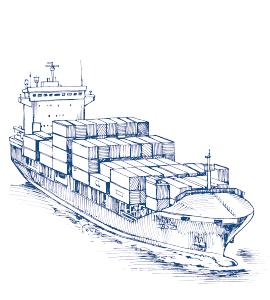THE CONTEXT
Seafood is the most widely traded animal protein on Earth. It plays a critical role in global food security, accounting for nearly one-fifth of humanity’s protein intake. The waters of the Asia-Pacific region are home to the most biologically diverse and productive marine ecosystems on Earth. The region’s Coral Triangle area, at the interface of the nutrient rich runoff from the continent and the archipelagos, the corals that thrive in the warm shallow oceans, and the deeper waters of the Pacific, is particularly biodiverse.
These ecosystems provide food and income to over 200 million people in the region. Communities in Southeast Asia are heavily dependent on marine and coastal fisheries for food and their livelihood. Fisheries in this region provide a significant percentage of the protein for the region’s poor, and are the source of important export products. Southeast Asia’s commercial fisheries supply one of the largest and most active seafood markets in the world, exporting products daily to international markets, including the United States (US), the European Union (EU), and China, Japan, Korea, and Russia. Importers rely heavily on Southeast Asia’s seafood products, with the U.S. importing approximately 90 percent of the seafood it consumes.
THE CHALLENGE
However, Asia’s fish stocks and coral reefs are in danger as a result of unsustainable fishing practices, which threaten biodiversity, food security, and livelihoods. Similar to global trends, capture fisheries’ production in Southeast Asia has risen steadily during the past several decades. As a result, Southeast Asia’s fisheries are in a state of overcapacity, and that overfishing combined with illegal, unreported, unregulated (IUU) and destructive fishing are causing fisheries to collapse. Continued demand for seafood from the region’s fisheries has impacted the productivity and health of the region’s marine ecosystems, threatening native marine species and degrading or destroying the habitats that they depend upon. The decline and failure of the regional fisheries will ultimately have devastating consequences for regional food security, and will seriously degrade the highest marine biodiversity area on the planet.
IUU fishing refers to those vessels operating in violation of the laws of a fishery or fisheries that are under the jurisdiction of a coastal state or to high seas fisheries regulated by regional organizations. IUU fishing on the high seas and within a Coastal State exclusive economic zone has significant negative ecological, economic, and social impacts, disproportionately affecting developing countries. To effectively combat IUU fishing, the illegality of the practice needs to be uniformly established, tools for governance and enforcement increased, and market access restricted for IUU fish products.
Additional challenges include unethical and illegal labor practices, engaged in by some fishery operators in the region, which may include unfit working conditions, labor rights violations, and the use of indentured servitude and slave labor. These issues have gained traction in the media, garnering attention from international news outlets and prompting human welfare initiatives and demand for increased traceability. Insufficient fisheries management and a lack of transparency in terms of how, where, and by whom seafood products are being caught threaten to perpetuate such challenges.
THE OCEANS AND FISHERIES PARTNERSHIP
The Oceans and Fisheries Partnership (USAID Oceans) is a USAID-funded activity, working in partnership with the Southeast Asian Fisheries Development Center (SEAFDEC), the Coral Reefs, Fisheries, and Food Security (CTI-CFF), and a wide range of public and private sector partners at regional, national, and local levels, to combat IUU fishing, promote sustainable fisheries and conserve marine biodiversity in the Asia-Pacific region.
USAID Oceans seeks to improve integrated and sustainable fisheries management through enhanced catch documentation and traceability (CDT), focusing on priority species that are vital for food security and economic growth and are under threat from IUU fishing and seafood fraud. The activity supports U.S. and regional efforts in Asia and the Pacific to promote sustainable fishing practices, collaborating with organizations and agencies such as the U.S. National Oceanic and Atmospheric Administration (NOAA), U.S. Department of the Interior (DOI), U.S. Department of State, the Food and Agriculture Organization of the United Nations (FAO), the Government of Sweden, the Government of Japan through the Japanese Trust Fund (JTF), among others. Learn more about USAID Oceans’ partners.
Core to USAID Oceans’ objectives is combating IUU fishing, enhancing fisheries management, and improving human welfare through enhanced catch documentation and traceability. To this end, USAID Oceans will design, develop, implement, and test an electronic CDT system, harnessing cutting-edge technology and leveraging global expertise.
USAID Oceans will work with partners across the Asia-Pacific region to synergize with and build off of ongoing and emerging initiatives to develop CDT systems. This includes the ASEAN Catch Documentation Scheme (ACDS) as well as the various national level initiatives being undertaken. The CDTS will seek to leverage ongoing compliance efforts including those to meet import market regulations from the EU, US, and national regulations in order to limit data collection burdens and improve data compatibility across user needs.
THE APPROACH
The Oceans and Fisheries Partnership works to combat IUU fishing and strengthen fisheries management through:
Download the Oceans and Fisheries Partnership Program Factsheet






